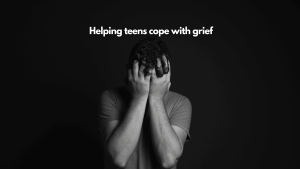We recently hosted a webinar on the important topic of online pornography and how it affects children’s safety. We encourage all parents and guardians to learn more and talk with their communities about the potential dangers of online pornography. A great place to start is Cyber Safety Cop’s recent webinar, “Online Pornography: How to Protect and Talk to Your Child About This Difficult Topic.” This webinar breaks down the key issues, offering easy-to-follow advice on how to talk to your kids and keep them safe online.
In today’s digital world, one of the toughest challenges for parents is dealing with their children’s potential exposure to online pornography. This blog is designed to equip parents and guardians with essential knowledge and practical tools to handle this delicate issue thoughtfully and effectively.
We aim to guide you through this sensitive area with compassion and understanding, ensuring you feel prepared to discuss and manage the risks associated with online pornography, helping to safeguard your children as they navigate the internet.
The Prevalence of Online Pornography
Online pornography is incredibly accessible in today’s digital landscape, and it’s important for parents and guardians to understand that children are quite likely to encounter it at some point. Research indicates that children typically come across pornography for the first time at about 12 years old. This isn’t just happening on obscure adult-only websites; mainstream platforms, social media sites, and even some seemingly innocent content channels can inadvertently lead to explicit material.
The vast reach of the internet means that explicit content can pop up unintentionally through advertisements, pop-ups, or misdirected links, making it almost impossible to fully shield children from exposure. Given the prevalence of smartphones and tablets, children have easier access to this content, often without supervision. As a parent, it’s essential to be proactive about discussing internet safety and setting up appropriate content filters and parental controls. This approach helps manage what content your child can access, reducing the chance of encountering adult material inadvertently.
Understanding the prevalence of online pornography is the first step in creating a safe online environment for your children. By acknowledging this reality and preparing both yourself and your children for the digital world, you can foster a healthier, more secure browsing experience.
Discussing Online Pornography with Your Child
Talking to your children about online pornography might feel uncomfortable, but it’s an essential conversation that shouldn’t be avoided. Start by acknowledging any awkwardness you feel, and emphasize that it’s normal to feel this way. The key is to approach the discussion with empathy and openness, creating a non-judgmental space where your child can feel safe to express their thoughts and experiences.
Key Points to Address in the Conversation:
-
Early Exposure: Make it clear to your child that they might accidentally stumble upon explicit content online. Assure them that if this happens, they can come to you without fear of getting into trouble. Explain that it’s important to discuss anything they’re uncomfortable with or don’t understand.
-
Addictive Nature: Explain how pornography sites are specifically designed to capture attention and keep users coming back. Discuss how these sites trigger the brain’s reward systems by releasing dopamine—a chemical that makes viewing feel good—thus potentially leading to habitual use. This is similar to how video games or social media work, but with potentially more serious consequences.
-
Realistic Expectations: Talk about how pornography often presents a distorted view of reality. It’s important for them to understand that these portrayals of relationships and sexuality are not realistic or healthy. Emphasize that real relationships are based on respect, consent, and genuine connection, which are often absent in pornographic content.
-
Safety Measures: Equip your child with knowledge on how to handle situations where they encounter pornographic material. This includes knowing how to close unwanted tabs or pop-ups, and how to use privacy settings and reporting tools on platforms they frequent.
-
Open-Ended Questions: Encourage them to ask questions about anything they find confusing or troubling, and be prepared to answer these questions honestly but appropriately, considering your child’s age and maturity level.
By maintaining an open line of communication and addressing these key aspects, you not only educate your child about the risks and realities of online pornography but also build trust, ensuring they feel supported and secure enough to approach you with any concerns in the future.
Detrimental Effects on Well-being
Exposure to online pornography can significantly affect a child’s psychological well-being. It’s crucial for parents to understand and communicate these potential impacts, which include increased anxiety, distorted perceptions of normal behavior, and unrealistic expectations of relationships and sexuality.
Key Psychological Impacts to Discuss with Your Child:
-
Increased Anxiety and Stress: Children who are exposed to pornography might feel anxious or stressed due to the confusing and explicit nature of what they see, especially if they encounter it before they are emotionally ready to understand such content. This anxiety can also stem from the fear of getting caught viewing such material or not understanding the images or scenarios presented.
-
Distorted Views of Relationships: Pornography often portrays unrealistic and unhealthy representations of how people interact sexually. Children who frequently view these portrayals may come to expect similar behaviors in real relationships, which can lead to disappointment and dysfunction in their future intimate interactions.
-
Impacted Self-Esteem and Body Image: Young viewers may develop insecurities about their bodies and sexual performance, which are often inaccurately depicted in pornographic material. This can lead to low self-esteem and a distorted body image, affecting their overall mental health and relationships.
-
Normalization of Aggressive Behavior: Some types of pornography include aggressive or non-consensual interactions that can normalize these behaviors for children. This can alter their understanding of consent and respect in relationships, leading to inappropriate behavior.
Discussing these topics helps build resilience by setting realistic expectations and fostering a healthier outlook on relationships and self-image. Open conversations about the risks associated with pornography can prepare your child to navigate their social and emotional worlds more successfully. It’s also important to reinforce that they can always come to you with questions or for support, ensuring they don’t feel isolated with their concerns.
Empowering Your Child with Refusal Skills
Empowering your child with the skills to refuse or exit uncomfortable online situations is a crucial aspect of digital parenting. By teaching them how to handle these scenarios, you’re not only protecting their emotional well-being but also helping them build a foundation for healthy relationships and respect for others.
Strategies to Teach Refusal Skills:
-
Emotional Well-being: Make sure your child understands the importance of protecting their own emotions and mental health. Teach them that it’s okay to exit any media content that makes them feel uncomfortable, anxious, or distressed. Encourage them to trust their instincts and talk to an adult if they feel disturbed by something they have seen online.
-
Healthy Relationships: Explain to your child that real relationships are based on mutual respect, consent, and genuine affection, which is often contrary to the depictions in pornographic content. Help them understand that a healthy relationship involves more than physical attraction and is built on trust, understanding, and caring for one another’s well-being.
-
Respect for Others: Instill a sense of dignity and respect for everyone, highlighting that everyone deserves to be treated with kindness and consideration. Teach them that pornography often fails to show respect for boundaries and individual worth and that this can lead to a distorted view of how to treat others.
-
Decision-Making Skills: Equip your child with decision-making skills to choose appropriate content online. Discuss the tools and settings available, such as content filters and privacy settings, which can help avoid exposure to inappropriate material.
-
Saying ‘No’: It’s important for children to feel confident in saying ‘no’ to activities and content they’re not comfortable with, whether it’s peer pressure or curiosity-driven browsing. Role-play different scenarios where they might have to decline or close a browser window, reinforcing that it’s always okay to say no.
Addressing the Harm to Women and Relationships
Addressing the impact of pornography on perceptions of women and relationships is crucial in helping your child develop healthy attitudes and behaviors. Pornography often objectifies individuals, especially women, and can promote unrealistic and unhealthy views of relationships.
Key Topics to Discuss:
-
Objectification: Explain that pornography often reduces people, particularly women, to mere objects meant to fulfill others’ desires. It’s important to teach your child that every individual deserves respect and should not be seen merely as an object.
-
Respect and Consent: Stress the importance of respect and consent in all relationships. Consent means agreeing to something without feeling pressured or coerced. Make sure your child understands that in real, healthy relationships, all parties have a voice and mutual respect is fundamental.
-
Realistic Expectations of Relationships: Discuss how relationships in pornography are not a reflection of real-life interactions. Real relationships are built on communication, trust, and mutual respect, far beyond just physical attraction or sexual activity. Help your child understand that true intimacy involves emotional connection and mutual care, which are rarely depicted in pornographic content.
-
Impact on Relationship Dynamics: Talk about how frequent exposure to pornography can alter one’s expectations of normal behavior in relationships, leading to dissatisfaction and potential conflicts. It’s important for children to know that real-life intimacy and relationships are not like what they might see in pornography.
The Impact on Family Dynamics
The consumption of pornography can significantly influence how individuals perceive and engage in relationships, which can affect family dynamics and trust. It’s crucial to discuss with your child how viewing such content might alter their expectations and behaviors in unhealthy ways. Emphasize the importance of openness and maintaining shared family values to foster healthy, trusting relationships within the family. Explain that trust is foundational in all relationships and that secrecy or deceptive behaviors, such as hiding online activities, can harm the trust that family members have in each other.
Navigating the Conversation
Initiating conversations about sensitive topics like online pornography requires careful consideration of your child’s age, emotional maturity, and cognitive development. It’s essential to use age-appropriate language and tailor the discussion in a way that your child can understand and feel comfortable engaging in. Here are some effective strategies for these discussions:
-
Calm and Compassionate Communication: Approach the conversation with a supportive and non-judgmental attitude. It’s important for your child to feel that they can speak openly without fear of punishment or harsh judgment. This builds a supportive environment where they feel secure.
-
Ask Questions and Listen: Encourage your child to share their thoughts and feelings by asking open-ended questions. Show that you are genuinely interested in what they have to say. This not only helps you understand their perspective but also makes them feel valued and heard.
-
Emphasize Long-term Impacts: Discuss the potential long-term effects of their online behaviors, such as the impact of their viewing habits on their thoughts, relationships, and future happiness. Make it clear that choices made now can have lasting effects, underscoring the importance of making thoughtful and responsible decisions.
Enhancing Parental Knowledge
As parents, staying informed about the digital platforms and types of content your child might encounter is essential. Understanding the latest apps, games, and social media trends is crucial for maintaining open communication and comprehending the challenges they face.
To further your knowledge, consider exploring resources like the book “Parenting in the Digital World: A Step-by-Step Guide to Online Safety.” This guide addresses key concerns about keeping your children safe online and covers important topics such as sexting, online predators, cyberbullying, appropriate screen time, and the risks associated with pornography.
Additionally, learn about the practical tools at your disposal. For instance, discover how to activate parental controls on various devices and platforms your child may use. This includes operating systems like Windows 10, macOS, and Chromebook, as well as mobile operating systems like Apple iOS and Android. Parental controls can also be applied to gaming consoles such as Xbox and PlayStation 4 and 5, and popular apps like TikTok, Instagram, and YouTube. These controls are vital for helping manage what your child is exposed to online.
Moreover, consider participating in educational webinars that can provide deeper insights and strategies. For example, Cyber Safety Cop’s webinar titled “Online Pornography: How to Protect and Talk to Your Child About This Difficult Topic” is an excellent resource. This webinar discusses how online pornography can affect your child, offers strategies to help prevent exposure, and provides guidance on how to communicate effectively about this topic with children of different ages.
By enhancing your understanding and staying up-to-date with digital trends and safety measures, you can be better equipped to guide and protect your child in the increasingly complex digital world.
Conclusion: Empowering Parents to Navigate the Digital Maze
As we wrap up, it’s important to recognize that navigating the digital world as a parent is a continuous journey that requires both vigilance and understanding. The digital landscape is ever-changing, and keeping up can seem daunting. However, by staying informed and engaging in open conversations with your children, you can significantly enhance their safety and well-being online.
Empowering yourself with knowledge about the digital platforms and content your child may encounter is key. Use the tools and resources available to guide and protect them such as activating parental controls, understanding privacy settings, and knowing how to manage screen time effectively.
Remember, open communication with your child is crucial. It builds trust and helps them feel comfortable coming to you with their online experiences and concerns. Discussing topics like online pornography and cyberbullying in an age-appropriate way helps them understand and manage the challenges they may face online.
Finally, never underestimate the power of community and support. Engage with other parents, attend workshops, and participate in webinars to share experiences and strategies. Together, you can navigate the digital maze with confidence, ensuring that your children grow up with a healthy and balanced understanding of the digital world.
By taking these steps, you not only protect your children but also equip them with the knowledge and skills they need to navigate the digital landscape responsibly and safely. Remember, you are not alone in this journey, and by fostering a supportive and informed family environment, you help pave the way for your children to thrive in the digital age.






